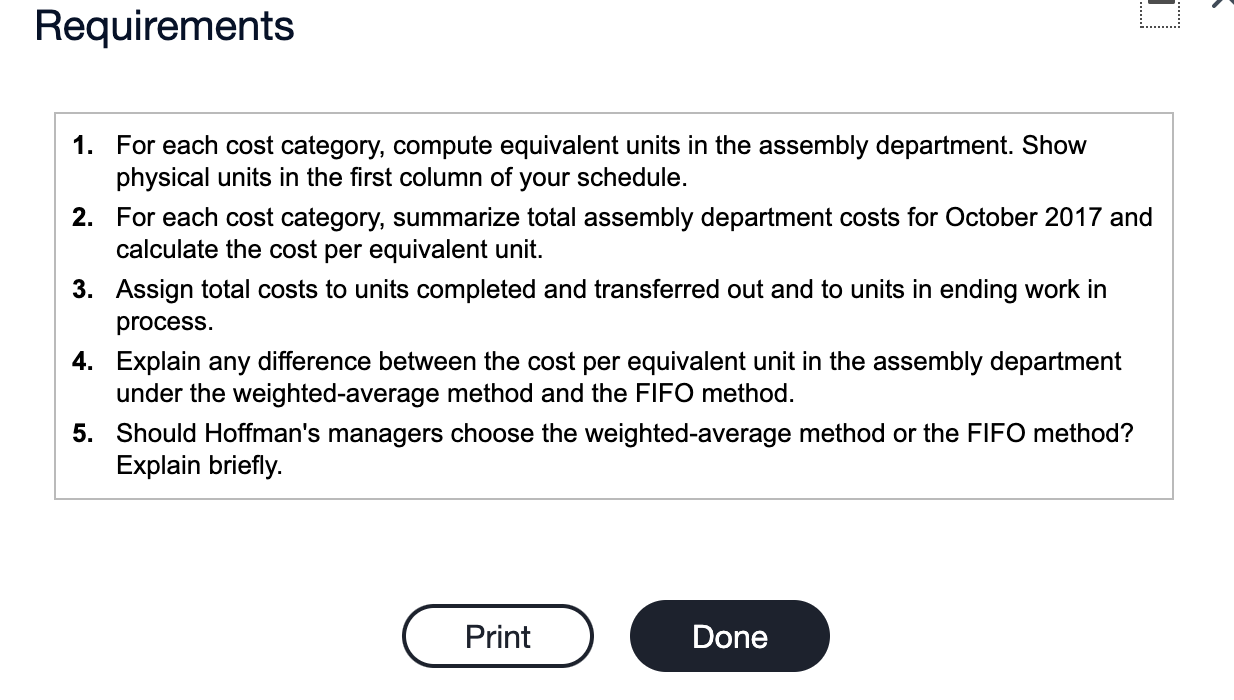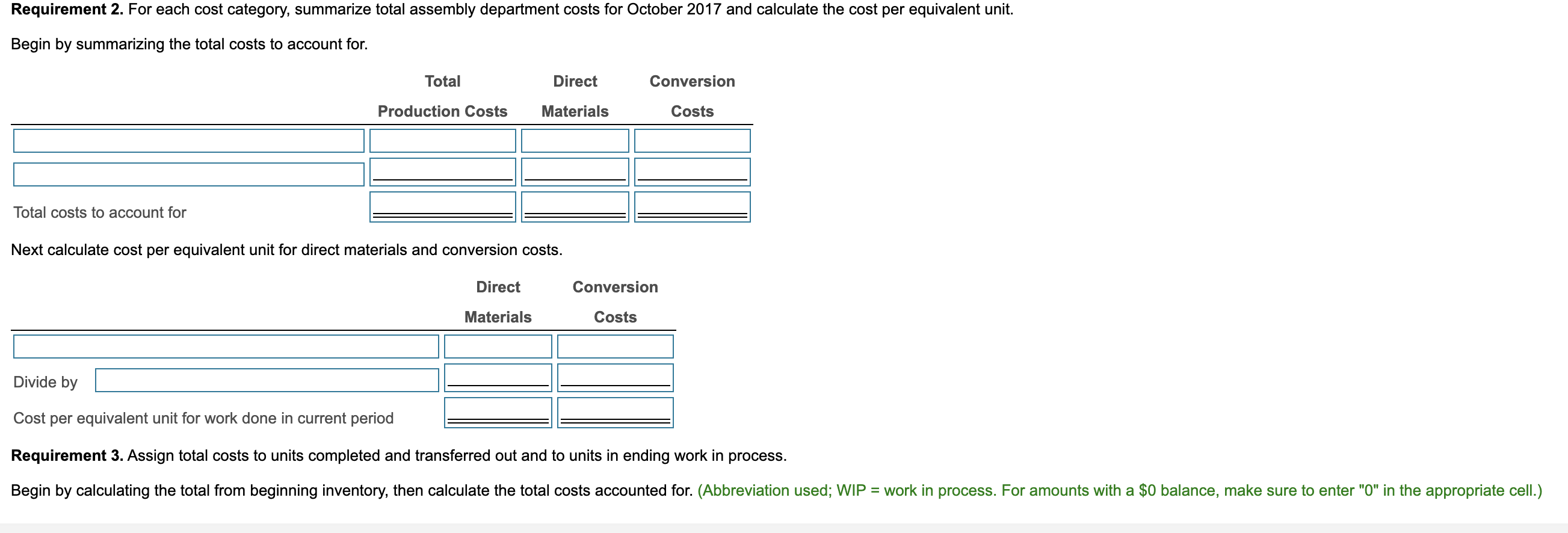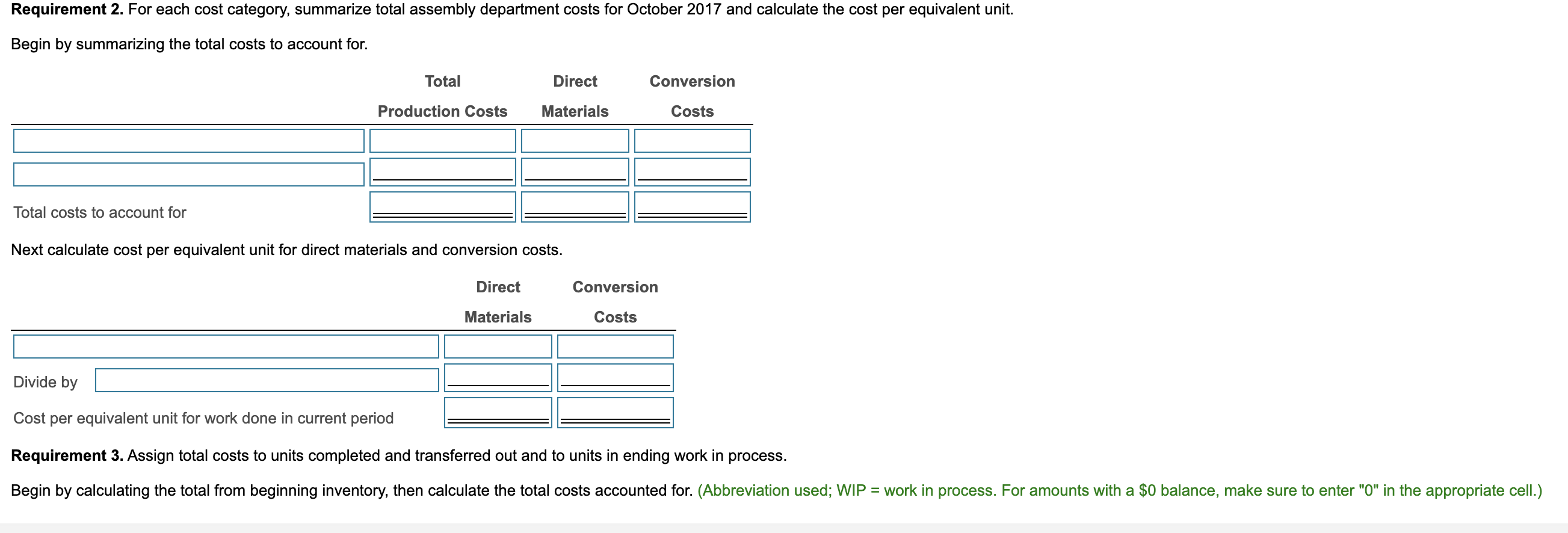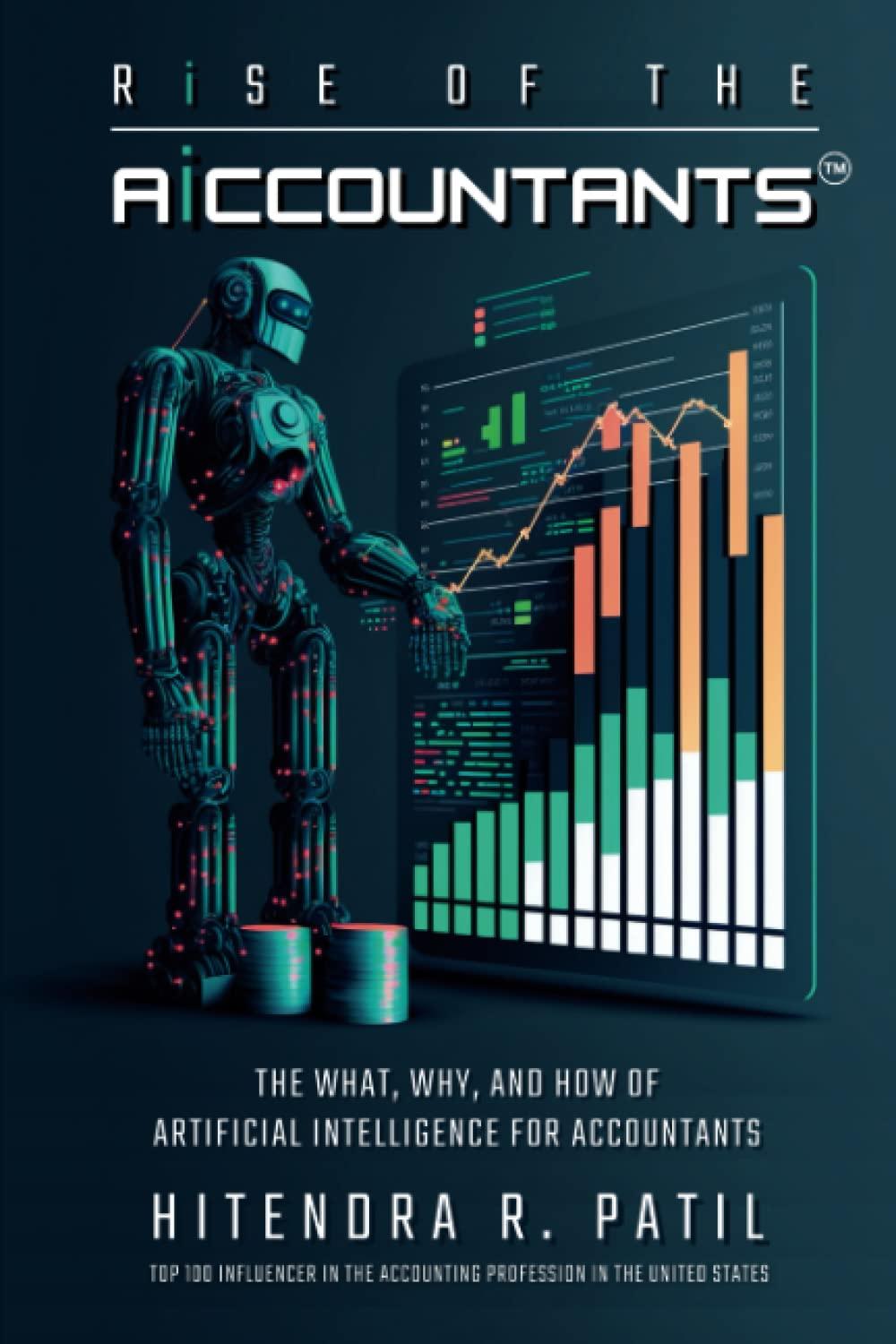






> Requirements 1. For each cost category, compute equivalent units in the assembly department. Show physical units in the first column of your schedule. 2. For each cost category, summarize total assembly department costs for October 2017 and calculate the cost per equivalent unit. 3. Assign total costs to units completed and transferred out and to units in ending work in process. 4. Explain any difference between the cost per equivalent unit in the assembly department under the weighted average method and the FIFO method. 5. Should Hoffman's managers choose the weighted average method or the FIFO method? Explain briefly. Print Done - Data Table Conversion Costs $241,650 Physical Units Direct (Car Seats) Materials Work in process, October 18 4,000 $1,248,000 Started during October 2017 22,500 Completed during October 2017 26,000 Work in process, October 31b 500 Total costs added during October 2017 $4,635,000 a Degree of completion: direct materials, ?%; conversion costs, 45%. bDegree of completion: direct materials, ?%; conversion costs, 65%. $2,575,125 Print Done Requirement 1. For each cost category, compute equivalent units in the assembly department. Show physical units in the first column of your schedule. (For amounts with a 0 balance, make sure to enter "0" in the appropriate cell.) Equivalent Units Physical Direct Conversion Flow of Production Units Materials Costs Work in process beginning Started during current period To account for Completed and transferred out during current period: From beginning work in process Started and completed Work in process, ending Accounted for Equivalent units of work done in current period only Requirement 2. For each cost category, summarize total assembly department costs for October 2017 and calculate the cost per equivalent unit. Begin by summarizing the total costs to account for. Requirement 2. For each cost category, summarize total assembly department costs for October 2017 and calculate the cost per equivalent unit. Begin by summarizing the total costs to account for. Total Direct Conversion Production Costs Materials Costs Total costs to account for Next calculate cost per equivalent unit for direct materials and conversion costs. Direct Conversion Materials Costs Divide by Cost per equivalent unit for work done in current period Requirement 3. Assign total costs to units completed and transferred out and to units in ending work in process. Begin by calculating the total from beginning inventory, then calculate the total costs accounted for. (Abbreviation used; WIP = work in process. For amounts with a $0 balance, make sure to enter "0" in the appropriate cell.) Requirement 2. For each cost category, summarize total assembly department costs for October 2017 and calculate the cost per equivalent unit. Begin by summarizing the total costs to account for. Total Direct Conversion Production Costs Materials Costs Total costs to account for Next calculate cost per equivalent unit for direct materials and conversion costs. Direct Conversion Materials Costs Divide by Cost per equivalent unit for work done in current period Requirement 3. Assign total costs to units completed and transferred out and to units in ending work in process. Begin by calculating the total from beginning inventory, then calculate the total costs accounted for. (Abbreviation used; WIP = work in process. For amounts with a $0 balance, make sure to enter "0" in the appropriate cell.) Requirement 3. Assign total costs to units completed and transferred out and to units in ending work in process. Begin by calculating the total from beginning inventory, then calculate the total costs accounted for. (Abbreviation used; WIP = work in process. For amounts with a $0 balance, make sure to enter "0" in the appropriate cell.) Total Direct Conversion Production Costs Materials Costs Completed and transferred out: Total from beginning inventory Total costs of units completed and transferred out Total costs accounted for Requirement 4. Explain any difference between the cost per equivalent unit in the assembly department under the weighted average method and the FIFO method. The cost per equivalent unit between the two methods because each method uses costs as the numerator of the calculation. The FIFO method uses and the weighted average method uses Both methods use Total costs accounted for Requirement 4. Explain any difference between the cost per equivalent unit in the assembly department under the weighted average method and the FIFO method. The cost per equivalent unit between the two methods because each method uses costs as the numerator of the calculation. The FIFO method uses and the weighted average method uses Both methods use equivalent units in the denominator. Requirement 5. Should Hoffman's managers choose the weighted average method or the FIFO method? Explain briefly. Begin by completing the table below that summarizes the costs assigned to units completed and those still in process under the weighted-average and FIFO process-costing methods. Weighted-average FIFO Difference Cost of units completed and transferred out Work in process, ending Total costs accounted for Hoffman's managers should consider the method because even though it shows operating income and cost of goods sold, it taxes. Managers may have an incentive, however, to use the operating income or if there are debt covenants that would be violated by showing income. Another advantage of the FIFO method and show higher income if the managers' compensation increases with method is that it provides better information for managing the business because it keeps













